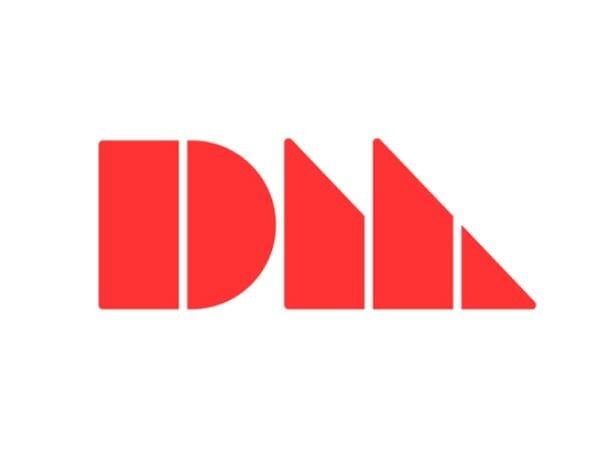Desktop Metal Expands Its Metal 3D Printing Materials Library With Global Launch Of Pure Copper For The Studio System
Now Commercially Available to Studio System Customers Worldwide, Copper Enables High-Performance, Highly Optimized Parts for Oil & Gas, Auto and Consumer Products Industries.

Desktop Metal, a leader in mass production and turnkey additive manufacturing solutions, today announced the launch of copper for the Studio SystemTM, an office-friendly metal 3D printing system for low volume production. With its excellent thermal and electrical conductivity, copper is considered an ideal material for transferring heat or electricity and is used in virtually every electronic device made, as well as in many of the heat exchangers used across a variety of industries, including oil and gas, automotive, and consumer products.
A key benefit for Desktop Metal customers is that the copper material used with the Studio System is pure copper. Unlike laser-based processes, which often print chromium zirconium copper, the Studio System’s proprietary Bound Metal DepositionTM process is able to print pure copper, unlocking the full benefits of the material.
“Known for its excellent thermal and electrical conductivity, copper is a highly desired material for a variety of industries and applications, such as heat exchangers and electrical components for heavy industries to consumer products,” said Jonah Myerberg, CTO and co-founder of Desktop Metal. “Whether for heat sinks, electrical motor and power grid components, or resistance welding electrodes, 3D printed copper on the Studio System is an ideal choice for manufacturing parts featuring complex geometries.”
Early customer applications demonstrating the material’s benefits include:
Manufacturing: Electrode Holder
Electrode holders are used to hold electrodes in position during resistive nut welding. Printed in copper, the part features internal conformal cooling channels to improve temperature regulation. Electrodes are consumable and need to be replaced quickly and affordably when they wear out to keep the manufacturing line up and running. Using copper in combination with conformal cooling channels helps to pull heat off the electrode and the electrode holder to better regulate the temperature, leading to a better weld and a longer part lifetime.
Automotive: Motor Heat Sink
Heat exchangers are designed to help dissipate heat from an electric motor while the motor operates, keeping the motor at a more ideal operating temperature. The Studio System allows for the copper heat exchanger to conform to the motor shape, distributing heat more efficiently from the motor to the surrounding environment. The tall, thin fins in this motor heat sink are easily customized using 3D printing on the Studio System, whereas they are more challenging to manufacture via machining, due to chattering as the fins are cut.
Chemical Processing: Helical Heat Exchanger
Helical heat exchangers are used to cool a hot gas as it flows through a pipe. The Studio System allows for the heat exchanger to be printed with an internal helical channel that enables cooling fluid to flow through it. The complex geometry of that channel can only be made with additive manufacturing.
Electric Power Distribution: Bus Bar
Bus bars are used for local high current power distribution. As power is being transferred, the bus bar begins to get hot, internal cooling channels help to regulate the temperature, and copper’s excellent thermal conductivity value ensures that heat is efficiently transferred from the bus bar to the coolant. The bus bar’s design features complex cooling channels running through its core. Using the Studio System, the bus bar can easily be printed as a single copper part complete with internal cooling features. Using traditional methods, the channels would require a multi-part assembly to create the final part.
Copper is the latest addition to the Studio System materials library that also includes 4140 chromoly steel, H13 tool steel, 316L, and 17-4 PH stainless steels. In addition to materials that are already available, Desktop Metal’s team of materials scientists are continuously working to develop new materials and processes to make 3D printing accessible to even broader industries and applications.
Studio System for Producing Complex Parts In-house
The metallurgy behind the Studio System is built upon the materials science and established powder supply chain of the metal injection molding (MIM) industry. When combined with Desktop Metal’s in-house expertise in material processing, binder compounds, and metal 3D printing, the results are high-quality metal parts with affordable material costs.
Key Studio System benefits include:
- High-quality parts. Users can easily 3D print difficult-to-machine parts with up to 98 percent density and featuring complex geometry-like undercuts and internal channels. Fabricate® software automates complicated metallurgical processes to produce high-quality parts with densities and feature accuracy similar to casting.
- Easy to use. The Studio System is built to make 3D printing metal parts as easy as uploading a design to Fabricate software and pressing print with no guesswork or manual calculations required. Material changeovers are quick and easy, enabled by a unique, hot-swappable material cartridge design.
- Designed for the office. The Studio System is designed to seamlessly integrate 3D printing into design and engineering workflows. By eliminating lasers and loose metal powders, the system easily assimilates into a team's work environment with no third-party equipment and minimal facilities investment required.

